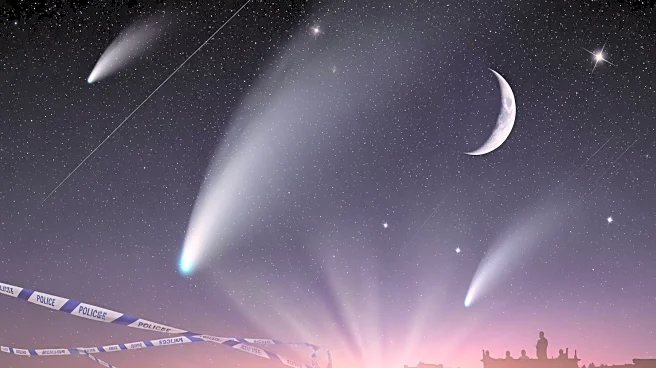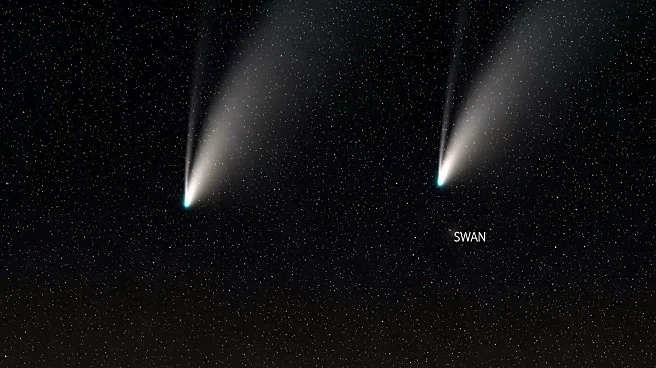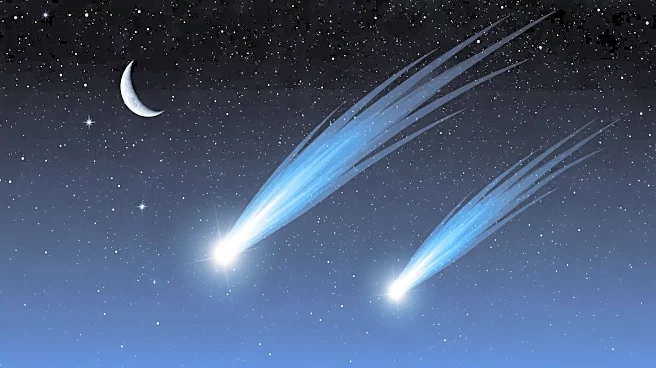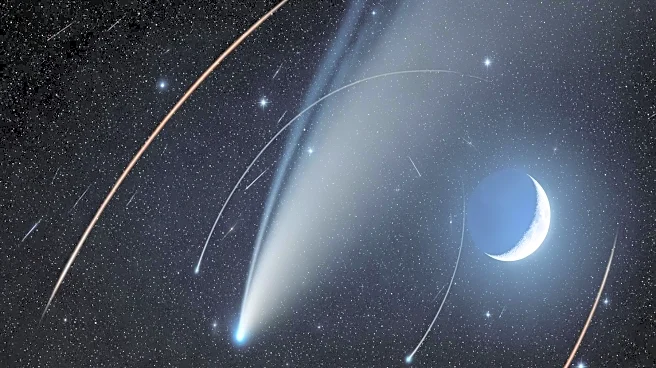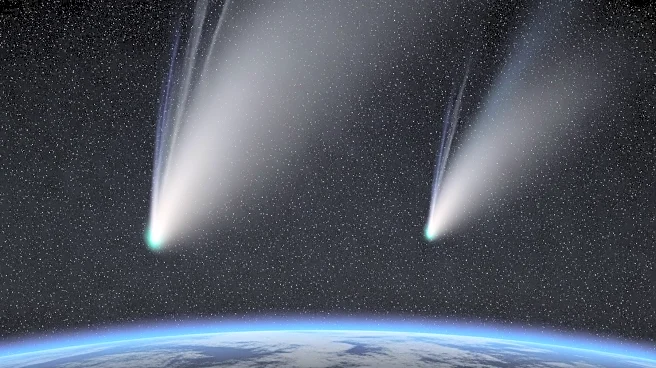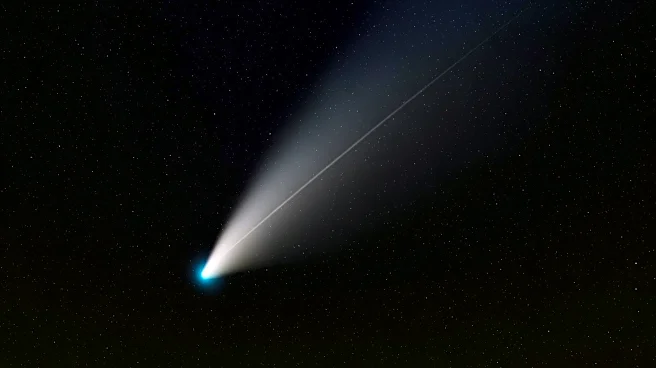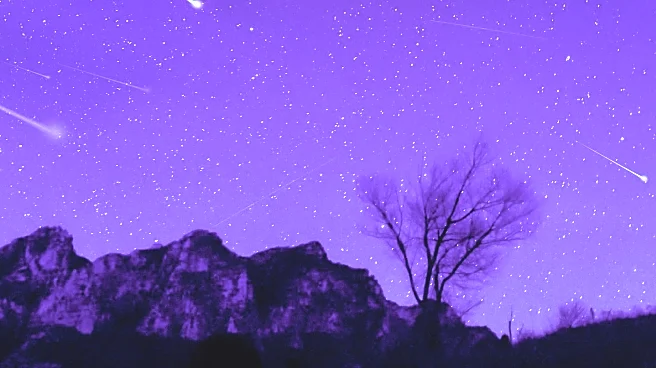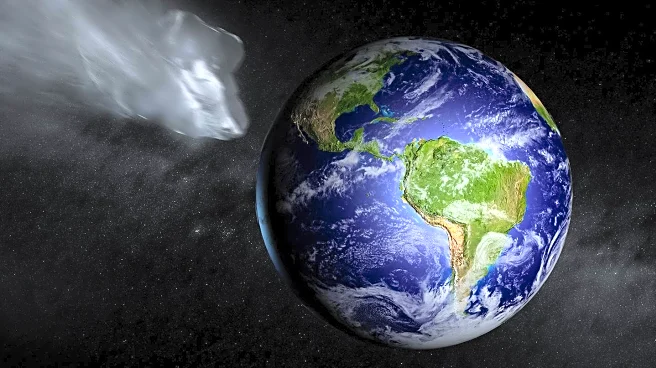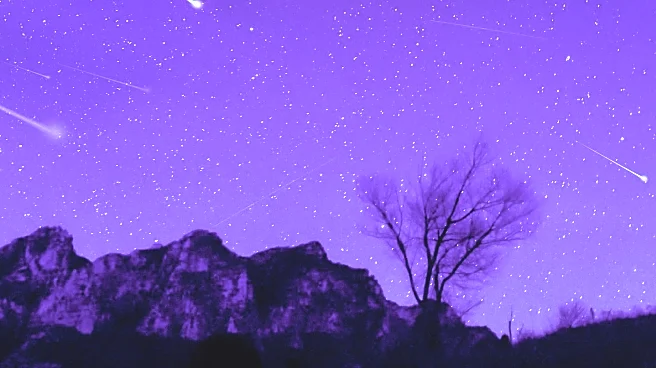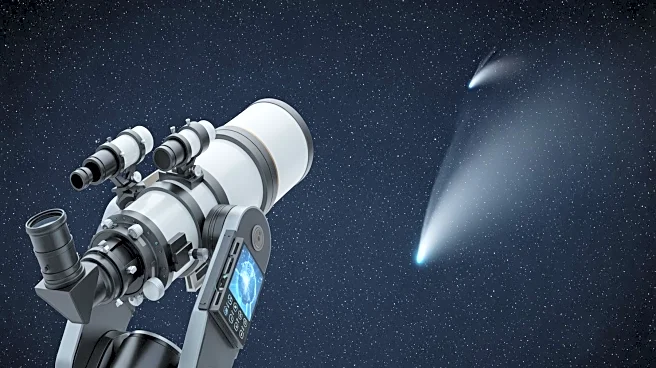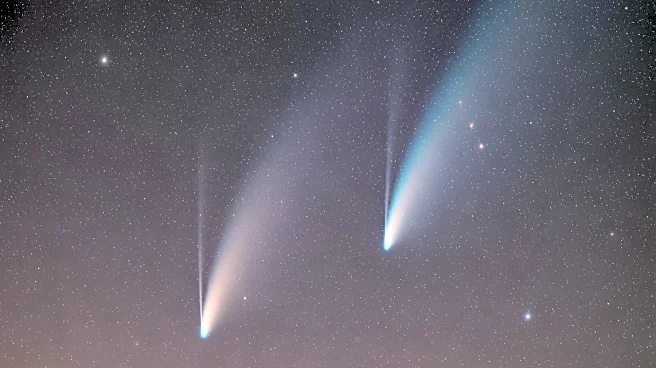What's Happening?
Two comets, Comet Lemmon (C/2025 A6) and Comet SWAN (C/2025 R2), are making their closest approach to Earth, providing a rare cosmic spectacle. Comet Lemmon will pass approximately 56 million miles from
Earth, while Comet SWAN will come even closer at roughly 24 million miles. Both comets are expected to peak in brightness between Monday and Tuesday, making them visible with optical aids. The Virtual Telescope Project, led by Astronomer Gianluca Masi, is offering a live stream of the event starting at 1:30 p.m. on Monday. Comet Lemmon, discovered in January, is visible in the western evening sky, while Comet SWAN, discovered in September, is best viewed in the predawn sky.
Why It's Important?
The approach of Comet Lemmon and Comet SWAN presents a unique opportunity for astronomers and the public to observe these celestial bodies, which are not expected to return for hundreds of years. This event highlights the importance of astronomical research and public engagement in science. The visibility of these comets can inspire interest in astronomy and provide educational opportunities for schools and science centers. Additionally, the live stream by The Virtual Telescope Project allows global access to this rare event, promoting international collaboration and interest in space exploration.
What's Next?
As the comets continue their journey, astronomers will monitor their brightness and trajectory, providing updates to the public. The event may lead to increased interest in astronomy and potential advancements in comet research. Observatories and science centers may organize viewing events, and educational institutions might incorporate this event into their curriculum. The Virtual Telescope Project's live stream will continue to offer real-time observations, fostering global participation in this astronomical event.
Beyond the Headlines
The appearance of Comet Lemmon and Comet SWAN underscores the unpredictability and wonder of space phenomena. It raises questions about the origins and paths of comets, contributing to the broader understanding of the solar system. The event also highlights the role of amateur astronomers and international collaborations in discovering and tracking celestial objects, emphasizing the democratization of space exploration.
